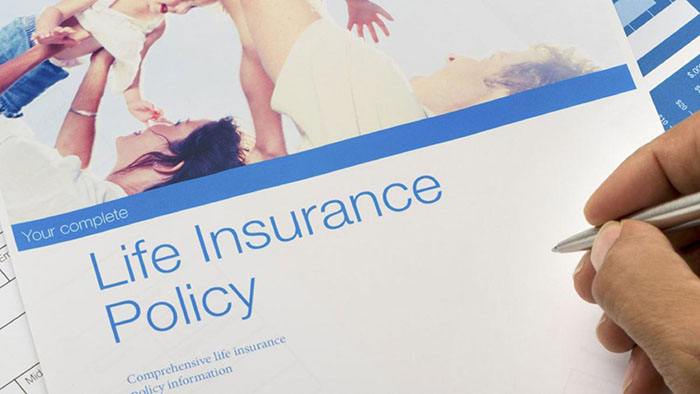Countless retailers have made it easier to purchase goods over time with buy now, pay later (BNPL) plans.
Need a new bed? Use BNPL. A wedding ring for your sweetie? BNPL. The newest Xbox? You see the thread here. Buy now, pay later plans are becoming increasingly popular, yet they aren’t without certain drawbacks and risks.
In this guide, we’ll take a deep dive into the BNPL trend and highlight potential pros and cons, who should use these payment plans and who shouldn’t, and suggest some possible alternatives to buy now, pay later payment plans.
What Is Buy Now Pay Later?
Buy now, pay later plans are basically short-term installment loans. They provide financial flexibility for consumers who can’t afford or don’t want to pay full price upfront for retail purchases or don’t want to increase the balance on their credit cards.
Many major national retail brands – Pottery Barn, Target, Walmart, Nike, Amazon, Apple, and others – accept BNPL. Typically, consumers pay for goods using an online platform that offers this short-term financing option. These platforms include Zip, Klarna, Affirm, Four, Afterpay, Sezzle, and others.
Here’s how BNPL works: You make a purchase using one of the BNPL platforms, which allows you to pay for your goods over time. You usually have to make an initial payment (up to 25% of the total purchase price) at the point of sale – think of your down payment as putting some “skin in the game.”
You’ll have a set schedule of fixed payments you have to meet to pay off your purchase and receive your goods – you get your purchase once you’ve completed your payment plan. Buy now, pay later platforms don’t usually charge consumers interest. Payments can be stretched over a few weeks or months, depending on your financial situation.
Most BNPL payment platforms require consumers to set up automatic payments to ensure they meet their financial obligations, the Consumer Financial Protection Bureau reports.
Which Lenders Have the Best Personal Loans?
If you’re looking to consolidate credit card or buy now, pay later debt, finding the lender with the best personal loan to meet your needs is as simple as using our search tool. Compare personal loans and find the best rates offered right now.
What Happens When You Use Buy Now, Pay Later?
Like any consumer financing, you must be approved to buy now and pay later. Unlike those other forms of debt, BNPL may not impact your credit score, which may be one reason for its rapid rise in popularity. According to the CFPB, the total volume of goods purchased using BNPL grew from $2 billion to $24.2 billion from 2019 to 2021.
BNPL service providers often check your credit with a “soft” inquiry, which doesn’t ding your credit report. However, they may require a hard credit check, which can temporarily reduce your credit score (especially if you have multiple hard inquiries over a short period).
When you use BNPL to make a purchase, you’ll make an initial payment at the cash register, and the rest of the payments will be automatically deducted from your bank account until the item is paid in full. Typically, you can opt for this payment plan when making your purchase. You don’t need an app installed on your phone from one of the BNPL providers mentioned above. Completing an on-screen application and getting approval usually takes just a few minutes.
What Are the Pros and Cons of Buy Now, Pay Later?
What Are the Hazards of Too Many BNPL Plans?
Most forms of credit share the same significant hazard: They make overspending easy. Buy now, pay later is no different.
Consumers may think that BNPL makes it easier to make larger purchases they can’t afford to buy at once, but that thinking can easily lead to overspending, especially if you have multiple BNPL payments. Mounting debt can make it hard to meet all your financial obligations or to pay off/pay down existing debt. Lack of financial liquidity could lead to excessive late fees, missed payments, and severe impacts on your credit score.
How to Manage BNPL
Managing any form of credit requires responsible spending, and buy now, pay later is no different.
A good rule of thumb is to purchase only what you can afford – it’s pretty hard to find yourself drowning in debt if you don’t overspend. When you control your spending habits, you know how much money you have and how much you can safely spend.
Information is the best way to manage your BNPL payments. Create a spreadsheet or simply write out the following:
- Full purchase price
- Payment schedule
- Date payments are deduced from your account
- Final Payoff
Tracking all your outgoing BNPL payments can ensure you have sufficient funds to meet your obligations. Lastly, always read the terms and conditions before making a BNPL purchase so there are no surprises.
Who Is BNPL Good For?
Buy now, pay later plans can be a good fit for consumers who know they will have sufficient liquidity to pay their installments on time. However, if you have enough money on hand to purchase in full, do so – never take unnecessary risks with your credit.
BNPL also can work if you are extremely responsible about paying your bills. If adding four BNPL installment payments to your monthly budget won’t unduly tax your financial situation, then it’s a viable payment option. Just make sure you are fully aware of the additional financial burden you are creating.
Who Shouldn’t Use BNPL?
A major problem with BNPL is that it can encourage consumers to purchase items they normally wouldn’t be able to afford. Buy now, pay later can make it far too easy to rack up debt for superfluous items that aren’t necessary.
According to Lending Tree, one-in-four people who’ve taken out BNPL loans have missed at least one payment. This is where fees begin to kick in and increase the cost of your purchase. Additionally, nearly 70 percent of people who used BNPL said they spent more than they would have if they were required to purchase in full rather than space out their payments over time.
In summary, use BNPL only if you can genuinely afford the purchase. If not, leave it on the store shelf.
What Are BNPL Alternatives?
As a consumer, you have a variety of alternatives if you want to avoid taking out a buy now, pay later installment loan. Here are three other payment options:
Take Out a Personal Loan
You could take out a personal loan with favorable terms if you have good to excellent credit. Often, you can get financed in a single day and quickly have your purchase in hand. Also, with personal loans, you can use the funds to consolidate existing debt or pay off high-interest credit card debt.
Apply for a No-Interest Credit Card
Creditworthy consumers can usually find credit card offers that have a zero-interest introductory period. Any purchases you make during this window won’t accrue interest. You’ll also get a more extended timeframe to complete your purchase, such as six months to one year.
Use Cash
It may take a bite out of your finances, but paying upfront for a new laptop, tablet, or other modestly expensive purchase alleviates concerns about credit usage.
The Bottom Line
Buy now, pay later installment loans can be a boon to help you make purchases you can’t afford all at once. They are a good fit for budget-minded consumers who can responsibly manage credit and meet their financial commitments.
BNPL also can work for important must-have purchases, such as a new laptop when your old one suddenly dies.
Buy now, pay later might not be the best option for frivolous purchases or consumers with a history of mounting credit card debt.
BNPL can make it easy for you to overspend and create an unsustainable financial situation that can have long-lasting repercussions on your credit score.
Frequently Asked Questions (FAQ)
Buy now, pay later purchases typically range from $50 to $1,000, the Consumer Financial Protection Bureau (CFPB) reports.
There’s no prepayment penalty for paying off a buy now, pay later purchase before completing your full installment schedule.
You’ll likely have to pay late fees if you miss a regularly scheduled payment. Often, the payment platform isn’t the actual lender, so you can’t call customer service to adjust your payment schedule or request a forbearance. That’s why it’s essential only to make purchases you can genuinely afford.























